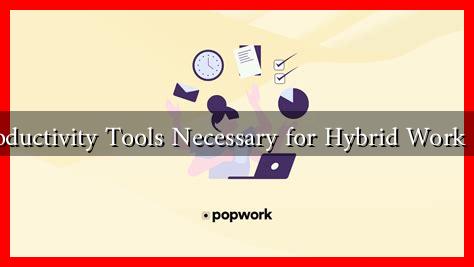-
Table of Contents
- Are Productivity Tools Necessary for Hybrid Work Success?
- The Rise of Hybrid Work
- Why Productivity Tools Matter
- Case Studies: Success Stories with Productivity Tools
- Statistics Supporting the Need for Productivity Tools
- Challenges of Hybrid Work Without Productivity Tools
- Conclusion: The Path Forward
Are Productivity Tools Necessary for Hybrid Work Success?
The hybrid work model, which combines remote and in-office work, has gained significant traction in recent years, especially following the COVID-19 pandemic. As organizations adapt to this new normal, the question arises: are productivity tools necessary for hybrid work success? This article explores the importance of productivity tools in enhancing collaboration, communication, and overall efficiency in a hybrid work environment.
The Rise of Hybrid Work
According to a report by McKinsey, 58% of employees in the U.S. have the option to work remotely at least one day a week, and 35% can work remotely full-time. This shift has prompted companies to rethink their operational strategies and invest in tools that facilitate seamless collaboration between remote and in-office employees.
Why Productivity Tools Matter
Productivity tools are software applications designed to help individuals and teams manage their tasks, projects, and communications more effectively. In a hybrid work setting, these tools become essential for several reasons:
- Enhanced Communication: Tools like Slack and Microsoft Teams enable real-time communication, reducing the chances of misunderstandings and ensuring that everyone is on the same page.
- Task Management: Applications such as Trello and Asana allow teams to track progress on projects, assign tasks, and set deadlines, which is crucial when team members are working from different locations.
- Time Management: Tools like Clockify and Toggl help employees monitor their time spent on various tasks, promoting accountability and efficiency.
- Document Collaboration: Google Workspace and Microsoft 365 facilitate collaborative document editing, allowing teams to work together in real-time, regardless of their physical location.
Case Studies: Success Stories with Productivity Tools
Several organizations have successfully implemented productivity tools to enhance their hybrid work models. Here are a few notable examples:
- GitLab: This all-remote company uses a combination of tools like GitLab itself for project management and Zoom for video conferencing. Their success in maintaining productivity and collaboration has made them a model for hybrid work.
- Salesforce: By integrating tools like Slack into their workflow, Salesforce has improved communication and collaboration among its hybrid teams, resulting in a 20% increase in productivity.
- Zapier: This fully remote company emphasizes asynchronous communication through tools like Notion and Google Docs, allowing employees to work at their own pace while still staying connected.
Statistics Supporting the Need for Productivity Tools
Research indicates that productivity tools can significantly impact employee performance and satisfaction:
- A study by the Harvard Business Review found that teams using collaboration tools reported a 25% increase in productivity.
- According to a survey by Buffer, 20% of remote workers cited communication and collaboration as their biggest struggle, highlighting the need for effective tools.
- Research from Gartner shows that organizations that invest in productivity tools see a 30% improvement in employee engagement and retention.
Challenges of Hybrid Work Without Productivity Tools
While some organizations may hesitate to adopt productivity tools due to costs or complexity, the challenges of hybrid work without them can be significant:
- Communication Gaps: Without proper tools, remote employees may feel isolated, leading to decreased morale and engagement.
- Project Delays: Lack of task management tools can result in missed deadlines and confusion over responsibilities.
- Reduced Accountability: Without time-tracking tools, employees may struggle to manage their workloads effectively, leading to burnout or underperformance.
Conclusion: The Path Forward
In conclusion, productivity tools are not just beneficial but essential for the success of hybrid work models. They enhance communication, streamline project management, and improve overall efficiency. As organizations continue to navigate this new landscape, investing in the right productivity tools will be crucial for fostering collaboration and maintaining employee engagement. The evidence is clear: to thrive in a hybrid work environment, companies must embrace technology that supports their teams, ensuring that both remote and in-office employees can work effectively together.
For more insights on productivity tools and hybrid work strategies, consider exploring resources from McKinsey and Gartner.

